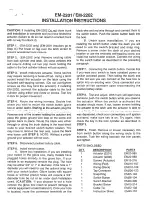
Note:
If you experience any unusual vibration, ride disturbance or noise
while driving, reduce your speed until you can safely pull off to the side
of the road to call for roadside assistance.
You can check the tire pressure any time within the 120 miles by
performing the following:
1. Ensure the compressor is turned off by pressing the “O” side of the
orange button.
2. Remove the hose and the cable with the electrical plug from the kit’s
storage compartment.
3. Remove the valve cap from the sealed tire, then screw the hose firmly
onto the tire’s air valve.
4. Insert the electrical plug into the vehicle’s power point.
5. Start the engine
(only if the vehicle is outdoors or in a
well-ventilated area)
to prevent the vehicle’s battery from draining.
6. Read the air pressure gauge on the inflation kit.
If the tire pressure needs to be increased, operate the air compressor
and inflate the tire to the recommended pressure as indicated on the
label on the B-Pillar.
WHEEL LUG NUT TORQUE SPECIFICATIONS
Retighten the lug nuts to the specified torque at 500 miles (800 km)
after any wheel disturbance (tire rotation, changing a flat tire, wheel
removal, etc.).
Bolt size
Wheel lug nut torque*
lb.ft.
N
•
m
1
⁄
2
x 20
100
135
* Torque specifications are for nut and bolt threads free of dirt and
rust. Use only Ford recommended replacement fasteners.
When a wheel is installed, always remove any corrosion, dirt or
foreign materials present on the mounting surfaces of the wheel
or the surface of the front disc brake hub and rotor that contacts the
wheel. Installing wheels without correct metal-to-metal contact at
the wheel mounting surfaces can cause the wheel nuts to loosen
and the wheel to come off while the vehicle is in motion, resulting in
loss of control.
200
6
GT
(gto)
Owners Guide (post-2002-fmt)
USA_English
(fus)
Tires, Wheels and Loading
79
















































